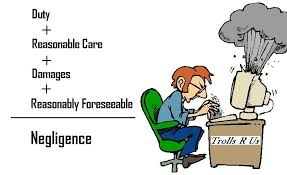Below is a copy of an article I recently published in New Law Journal. I will continue with the analysis of bullying claims in subsequent posts.
Most individuals assume that if a dispute arises between themselves and their employer that they will need to take action in the Employment Tribunal and will approach an Employment Lawyer.
 Historically there have been significant advantages to the Employment Tribunal. It was previously free to pursue your claim and there was always minimal risk of any adverse costs. Times have changed and now there is compulsory referral to ACAS for mediation and now it is necessary to pay Tribunal fees. I have seen several reports in the Law Society Gazette about the dramatic decrease in the number of Tribunal claims issued with falls of approximately 80% reported from this time last year.
Historically there have been significant advantages to the Employment Tribunal. It was previously free to pursue your claim and there was always minimal risk of any adverse costs. Times have changed and now there is compulsory referral to ACAS for mediation and now it is necessary to pay Tribunal fees. I have seen several reports in the Law Society Gazette about the dramatic decrease in the number of Tribunal claims issued with falls of approximately 80% reported from this time last year.
It seems however that many people are now reverting to bringing claims in the civil courts. Most Employment Lawyers I know will hold their hands up and say the civil procedure rules are about as alien to them as winning the World Cup is to Lichtenstein.
It has always been important for Employment Lawyers to understand the civil remedies available to Claimants. Those who don’t consider the wider options available to Claimants can lead to issues of professional negligence.
Given the competing jurisdiction of the Employment Tribunal and Civil Courts, this can give rise to complex arguments surrounding abuse of process and res judicata which is why it is so important for individuals to consider all of the civil and tribunal remedies available to him/her before embarking on legal action which may or may not not be in the clients best interest.
Abuse of Process and Res Judicata
One of the central features of the English legal system is the requirement to bring all matters in dispute between parties within one set of proceedings. This is set out succinctly in the Judgment in Henderson v Henderson 1843 in which it was stated that:
‘I believe I state the rule of the Court correctly when I say that, where a given matter becomes the subject of Litigation in, and of adjudication by a Court of competent jurisdiction, the Court requires the parties to that litigation to bring forward their whole case, and will not (except under special circumstances) permit the same parties to open the same subject of litigation in respect of matter which might have been brought forward as part of the subject in contest, but which was not brought forward, only because they have, from negligence, inadvertence, or even accident, omitted part of their case. The plea of res judicata applies, except in special cases, not only to points upon which the Court was actually required by the parties to form an opinion and pronounce a judgment, but to every point which properly belonged to the subject of litigation, and which the parties, exercising reasonable diligence, might have brought forward at the time.’
To put this simply, parties must bring all matters in dispute within one set of proceedings and a failure to do so will, save in special circumstances, prevent the parties re-litigating further issues which were in existence at the time of the earlier dispute in subsequent proceedings.
This can consequently result in a complete bar to re-litigation and can be particularly problematic in relation to the cross over between employment and civil jurisdictions. Even if a party is able to present further litigation it is likely that any findings of fact in the earlier proceedings will be binding as explained in the Judgment of Diplock LJ in Thoday v Thoday[1964] 1 AER 341 at 352
‘The particular type of estoppel relied on by the husband is estoppel per rem judicatam. This is a generic term which in modern law includes two species. The first species, which I will call “cause of action estoppel”, is that which prevents a party to an action from asserting or denying, as against the other party, the existence of a particular cause of action, the non-existence or existence of which has been determined by a court of competent jurisdiction in previous litigation between the same parties. If the cause of action was determined to exist, ie, judgment was given on it, it is said to be merged in the judgment, or, for those who prefer Latin, transit in rem judicatam. If it was determined not to exist, the unsuccessful plaintiff can no longer assert that it does; he is estopped per rem judicatam. This is simply an application of the rule of public policy expressed in the Latin maxim, “nemo debet bis vexari pro una et eadem causa”. In this application of the maxim, causa bears its literal Latin meaning. The second species, which I will call “issue estoppel”, is an extension of the same rule of public policy. There are many causes of action which can only be established by proving that two or more different conditions are fulfilled. Such causes of action involve as many separate issues between the parties as there are conditions to be fulfilled by the plaintiff in order to establish his cause of action; and there may be cases where the fulfilment of an identical condition is a requirement common to two or more different causes of action. If in litigation on one such cause of action any of such separate issues whether a particular condition has been fulfilled is determined by a court of competent jurisdiction, either on evidence or on admission by a party to the litigation, neither party can, in subsequent litigation between them on any cause of action which depends on the fulfilment of the identical condition, assert that the condition was fulfilled if the court has in the first litigation determined that it was not, or deny that it was fulfilled if the court in the first litigation determined that it was.’
The particular difficulties relating to the overlap between Personal Injury and Employment have been highlighted in two cases of note. Firstly the cases most commonly quoted by Defendant is Sheriff v Klyne Tuggs (Lowestoft) Limited [1999] ICR 1170. This case involved a Claimant who brought a claim for race discrimination in the Employment Tribunal. The case was settled by way of a compromise agreement and the Claimant then brought further civil proceedings for the personal injuries sustained as a result of the discriminatory acts. The Court of Appeal struck out the civil claim as an abuse of process as the Claimant could, and should, have pursued the entirety of his claim within the Employment Tribunal.
The Sheriff decision is in contrast to the decision in McCabe v Cornwall County Council & The governing Body of Mounts Bay School (2003) IRLR 87 in which the civil claim was allowed to proceed psychiatric injury after the Claimant had already succeeded in recovering damages for unfair dismissal in the Employment Tribunal.
In McCabe the Court state that:
‘It may be – and I express no view on this – that if he (the Claimant) has succeeded in obtaining a compensatory award from the tribunal, the extent and make up of that award could have some bearing on the amount of damages, if any, which he could recover in the common law claim, if only to prevent inadvertent double recovery. But that is a different question from the survival of a separate and discrete common law remedy notwithstanding recovery for unfair dismissal before a Tribunal.’
There are two key factors which resulted in the differing decision in Sheriff and McCabe;
- The cause of action which gave rise to the civil claim in McCabe pre dated the events resulting in the unfair dismissal and hence the civil liability pre dated any liability in the Employment Tribunal; and
- The Employment Tribunal does not have jurisdiction to award personal injury following a finding of unfair dismissal whereas the Tribunal would have jurisdiction to award personal injuries following a finding of discrimination.
Potential Civil Remedies
An increasingly common claim available to Claimants is a claim for psychological injuries caused as a result of the Employers breach of duty, breach of contract, bullying or harassment (Stress at Work claims).
Generally the Employment Tribunal do not have jurisdiction to award damages for personal injuries save in certain exceptional circumstances. The central exception being where the injuries arise as a result of discrimination as stated above.
Discrimination is a widely misconstrued phrase and I have seen many individuals claim that they have been ‘discriminated against’ without understanding the technicalities under the Equality Act 2010 particularly surrounding the need to possess a ‘protected characteristic’.
Stress at Work claims are notoriously difficult and there are a number of hurdles to overcome. One of the most problematic issues relates to the necessity to prove, in most case, that the employer could reasonably have foreseen the likelihood of the Claimant suffering psychological injury. This problem does not exist in the Employment Tribunal where there is a finding of discrimination.
Stress at Work Claims can arise in the following circumstances:
- Negligence – for instance failure to follow recommendations of Occupational Health, failure to arrange return to work interviews, causing an individual to have an excessive workload.
- Bullying and Harassment – There is generally no liability in the Employment Tribunal for bullying and harassment (save for where such acts are discriminatory). Bullying and harassment can be from managers or colleagues;
- Breach of Contract – if the Employer breaches their own policies or procedures this can give rise to a claim for personal injuries;
- Breach of Statutory Duty – ordinarily this will be the Management of Health and Safety at Work Regulations 1999 or the Protection from Harassment Act 1997.
Many employment claims are fundamentally based on breach of contract and breach of contract is generally a civil claim. Parliament have legislated so that certain breach of contract claims, for instance constructive dismissal, must be brought in the Tribunal but there remains the entitlement in certain situations to bring civil proceedings as an alternative to Tribunal proceedings.
Another, albeit rare, option would be the use of an Injunction to prevent the early termination of an employment contract prior to the fulfilment of the appropriate disciplinary procedures as highlighted in the decision in Societe Generale v Geys (2012) UKSC 63.
The use of injunction is of particular relevance whereby the employee obtains a certain benefit or financial reward for a period of service and the employer is seeking to force termination of a contract prior to this period of time has elapsed.
Practical Position
 I would suggest that all Employment Lawyers need to be aware of the civil remedies available to their clients, particularly for personal injury, and if they are not sure it would be advisable to ensure that Employment Lawyers have a relationship with another Solicitor either in their firm or at another firm (or alternatively Counsel) who can assist in assessing all of the avenues before the client embarks on legal action.
I would suggest that all Employment Lawyers need to be aware of the civil remedies available to their clients, particularly for personal injury, and if they are not sure it would be advisable to ensure that Employment Lawyers have a relationship with another Solicitor either in their firm or at another firm (or alternatively Counsel) who can assist in assessing all of the avenues before the client embarks on legal action.
For the reasons of res judicata/abuse of process, an Employment Lawyer could find themselves in all kinds of difficulties if they have not advised a client on all of the remedies available or have, for instance, failed to include all of the potential claims within the Tribunal proceedings.
At a time when the use of civil remedies is becoming more prevalent, those employment lawyers not up to speed on this may soon find that they are losing business or, worse, being sued for professional negligence for failing to advise on all of the avenues available.
As a checklist I would suggest that every Employment Lawyer should consider all of the following issues for every new client they liaise with:
- Does the client have a Protected Characteristic? If so, what is it?
- Is the treatment which the Client has been subjected to as a result of the Protected Characteristic?
- Has the Client suffered a Psychiatric Injury as a result of their employment? For instance have they sought medical attention and been placed on medication or referred to counselling?
- If the client’s employment is ongoing, are the Employers following their own policies and procedures, in particular a disciplinary procedure?
- If the dismissal or acts complained of occurred more than 3 months ago, do not assume that the case is time barred. Is there an appropriate civil remedy available?
If you are already acting for a Claimant, particularly one with a discrimination claim, then I would suggest that as standard an Employment Lawyer should be assessing whether there is an injury claim in order to include this with the Tribunal proceedings.
I would also caution against the traditional thought process of adding discrimination allegations within an ET1 in order to avoid the statutory cap on compensation where the discrimination allegations are weak. By including an allegation of discrimination, this may prevent a separate, and possibly stronger, civil claim being pursued.
I write a regular blog on these type of issues and please feel free to follow this at https://stresslawyer.wordpress.com or follow me on Twitter (@RichardCMLS) for regular updates.
Richard Coulthard
Head of the Stress at Work Department
Michael Lewin Solicitors (www.michaellewin.co.uk)
Leeds








